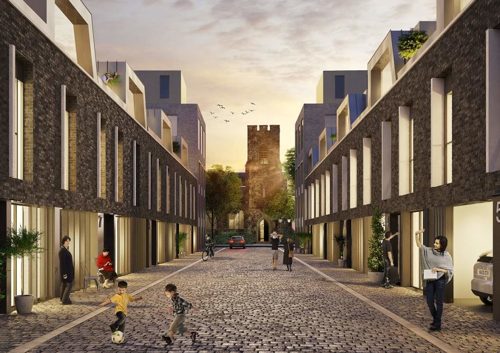Landscape Institute Awards 2019: the winners
The 2019 winners of the Landscape Institute Awards were announced last Thursday 28 November in London, alongside Sir David Attenborough who was awarded the Landscape Institute Medal.
As extreme weather - from flooding and intense storms to wildfires burning on several continents - becomes the new norm, the way we manage our landscapes is becoming even more important. Many of the winners of the 2019 Landscape Institute (LI) Awards have tackling the climate and biodiversity emergency at the heart of what they are doing.
Announced on Thursday 28 November at The Troxy in London, the winning projects showcase a range of crucial interventions: better managing water resources, using natural methods to mitigate hurricane damage, reclaiming streets and green spaces, improving air quality, connecting our communities and restoring habitats.
Alongside the winners, Sir David Attenborough also attended the ceremony, where he was awarded the Landscape Institute Medal, recognising his phenomenal contribution to educating and to connecting people, place and nature over multiple generations. Sir David was also awarded Honorary Fellowship of the LI.
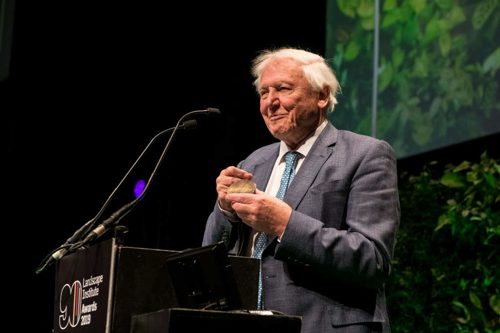
Some key climate and biodiversity tackling winners and community connecting projects include:
-
Walthamstow Wetlands – opening up nature to Londoners
Winner: Kinnear Landscape Architects Ltd for the ‘Adding value through landscape’ category
The Walthamstow Reservoirs is a 211-hectare site within the Lea Valley Green belt. The site previously had limited access and was surrounded by neighbourhoods with deficient access to nature. Through this project the scale of space opened up to public is remarkable in London - opening up the Wetlands to public access whilst protecting a sensitive nature reserve with SSSI, SPA and Ramsar status. All of this has been achieved whilst also accommodating the operational requirements of Thames Water.
Opening up the Wetlands has been significant due to the large amount of associated health, well-being, educational, ecological and economic benefits. Today the wetlands are integral in the Lea Valley network, increasing access to nature for the surrounding neighbourhoods and drawing visitors from the whole of London and beyond. The amount of footfall has so far reached three times the initial predication, in a third of the time.
The team successfully navigated the complexities of the site, clients, and funding groups to create a seamless integration of architecture and landscape. KLA has embraced the unique character of the site by reusing industrial remnants and building on existing materials, whilst enhancing the habitats. The result is that the Wetlands have become a vibrant public space which encourages learning and experiencing wildlife, reaching neighbouring communities and visitors from afar. The Wetland site also promotes sustainable travel by encouraging visitors to cycle, walk or use public transport to access the site.
-
FitzPark – reclaiming the city streets to improve air quality and connect people
Winner: ARUP with FitzPark for the ‘Design for a temporary landscape’ category
How we live, work and connect with people in our cities is a key challenge for the 21 st century. FitzPark was a high-quality temporary space in central London created by Arup, to promote a change in people's attitude towards roads and inspire what city streets can be in the future.
The installation was created in London’s Fitzrovia area and included informal seating, café space, work, play, events and education; it aim was to raise awareness of air quality issues, create more space for people, promote health and wellbeing, support local business, as well as improving the look and human experience of the city. The scheme was monitored throughout its duration in order to understand the social value of urban environments. A pre and post evaluation study of the project will enable the impact of the scheme to be captured and communicated and inform how projects like this can improve the quality of life for those living in busy and polluted cities.
-
Landscape Belt Xianglu Bay in Zhuhai – creating a storm-resistant landscape using natural methods
Winner: LAY-OUT Planning Consultants with the Landscape Belt of Xianglu Bay in Zhuhai – ‘ Dame Sylvia Crowe Award for outstanding international contribution to People, Place and Nature’ category
Extreme weather is a danger to many and in the southeast coastal area of China, typhoons often occur in the summer and autumn, with heavy rains and tidal waves. Zhuhai, which is located in the west side of Zhujiang River, has always suffered these tropical cyclones.
The site at Xianglu Bay stretches for about 1.5km and is a popular space among local people. However, the breakwater along the road did not provide a cushion to protect the seaside area like the beach before it. It also blocked the link between city and sea and the quality and ecology of the water was affected, with typhoons breaking the embankment every year.
By restoring the beach along Xianglu Bay, the design team constructed a clean beach occupying 90,000m2. The soft beach reduces the power of waves and by using natural methods to deal with disaster, they have established a new standard for the restoration of a coastal waterfront in a typhoon-prone region. The judges thought this landscape masterplan was an outstanding example of how to protect coastal regions from storms, while at the same time creating a beautiful linear coastal park and improving biodiversity.
-
What’s Growing on the Greenway (WGOTGW) – improving biodiversity and connecting communities to their landscape
Winner: Anthony McGuigan & Darren McKinstry, The Paul Hogarth Company for both the ‘Communications and presentation’ category and the prestigious LI President’s Award
Connecting people to the green space and biodiversity around them is crucial to protecting our environment for future generations. The Connswater Community Greenway does this brilliantly through a 9km linear park through east Belfast, following the course of the Connswater, Knock and Loop Rivers - creating vibrant, attractive, safe and accessible parkland for leisure, recreation, community events and activities.
It has now taken this to the next level with What’s Growing on the Greenway (WGOTGW). Inspired by the New York High Line’s ‘Plant of the Week’ blog the two landscape architects responsible for the project decided to write their own weekly blog to encourage and celebrate the communities’ interaction with the new landscape. This weekly blog grew in popularity and spawned two photographic exhibitions and a book detailing a year of exploring testing and learning about the developing connection between people, place and nature in this revitalised urban landscape.
This project is unusual, as following a significant capital investment, project professionals move on to the next place and rarely have the opportunity to engage with the people experiencing the place they helped to shape and create.
The WGOTGW process allowed the landscape professionals to explore, test and learn about the developing connection between people, place and nature within the revitalised urban landscape. By discussing the new and existing plants they wanted to help create a connection between people and the nature they encounter every day. The approach wanted to highlight that plants can be of interest to everyone and to encourage people to explore further and stay longer on the Greenway all year round.
This Lottery funded project has a goal to increase physical activity levels by at least 2% in East Belfast – if such an increase in use of the park and its facilities is achieved it would create the value needed to cover the cost of the project over its lifetime.
Adam White, President of the Landscape Institute said: "The Landscape Institute Awards celebrate the contribution the landscape profession makes to all our lives. The standard continues to grow with over 180 entries this year, and we are delighted to see the impact projects are having on people, communities and the wider landscape.
"In June this year the LI declared a climate and biodiversity emergency and that is why I am particularly impressed to see the range of projects that are leading the way in developing innovative ideas and approaches at this crucial time for our planet. At a time when we are seeing more and more extreme weather, from flooding in Yorkshire and Derbyshire to wildfires burning on several continents, as individuals and as a profession we have the opportunity to make a real difference.
"Following that declaration, we have put in place an expert panel to look at how we take forward the work we do as an organisation and the support and leadership we can give to our members. This is not a talking shop and after the panel reports in March 2020 we will be setting out a clear programme of action for the future.
"On a personal note I am delighted that the Institute has honoured Sir David Attenborough with the LI Medal and also made him an Honorary Fellow of the Institute. As a leading light of his generation, who has for many decades been highlighting the importance of looking after our precious planet, this accolade recognises his phenomenal contribution to education and to connecting people, place and nature."
Dan Cook, Landscape Institute CEO said: "As an organisation we are committed to reducing our carbon and ecological footprint, deliver against the UN Sustainable Development Goals and to supporting our members to do the same. This year we have taken steps to make our LI Awards more sustainable, including prioritising vegetarian meal options and committing to offsetting our event impacts through tree planting, by supporting a specific new project in Luton.
"For 2020 we will include an even greater emphasis on climate and biodiversity, with specific new award categories and new criteria for all awards that show how this profession’s work directly benefits people, place and nature."
Landscape Institute Awards 2019 – winners & shortlisted projects
Around 50 people from diverse backgrounds, from many different professional specialisms are involved in judging these awards. They are from within and outside the profession. Every single winner is judged objectively, and site visits take place for certain categories, making the awards fair and genuine for all entrants.
Below are the different categories and if you click on the link you can see the winner & finalists for each Award in more detail. The winners and shortlisted projects are also listed below.
SPECIAL ACCOLADES
President’s Award
PROFESSIONAL CATEGORIES
Adding Value through Landscape
Communications and Presentation
Design for a Large-Scale Development
Design for a Medium-Scale Development
Design for a Small-Scale Development
Design for a Temporary Landscape Project
Enhancing Heritage & Culture
Excellence through Planting & Horticulture
Landscape Planning & Assessment
Local Landscape Planning
Transforming through Management and Science
Urban Design and Master planning
OPEN CATEGORIES
Landscape Innovation Award
Outstanding International Contribution to People, Place & Nature
Landscape Legacy Award
SPECIAL AWARDS
Client of the Year
Volunteer of the Year: This was awarded to Bill Blackledge CMLI at the LI’s Jellicoe Lecture held November 7 in Leicester City.
SPECIAL ACCOLADE: THE PRESIDENT’S AWARD
Winner: What’s Growing On The Greenway, The Paul Hogarth Company Limited
With What’s Growing on the Greenway, the Paul Hogarth Company opened a dialogue with the community of East Belfast about their new landscape at the Connswater Community Greenway. Clear and comprehensive, reflective, interactive, open and caring, this work will leave a lasting legacy for the local community.
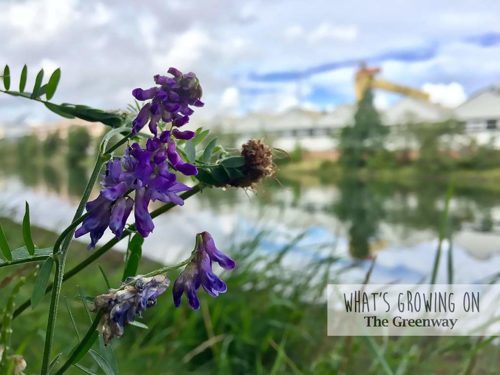
PROFESSIONAL CATEGORIES
Adding Value Through Landscape
Winner: Walthamstow Wetlands, Kinnear Landscape Architects Limited
The aim of this project was to open up to public access the 211-hectare Walthamstow Reservoirs in the Lea Valley Green Belt. As lead consultant, the multi-disciplinary team at Kinnear Landscape Architects worked over the course of five years to deliver a vibrant public space, while still protecting and enhancing the sensitive natural habitats.
Shortlisted projects:
Connswater Community Greenway, The Paul Hogarth Company Limited
DISH (Dine In Southall), Southall Manor House, SEED_landscape design Ltd
Greener Grangetown, Arup
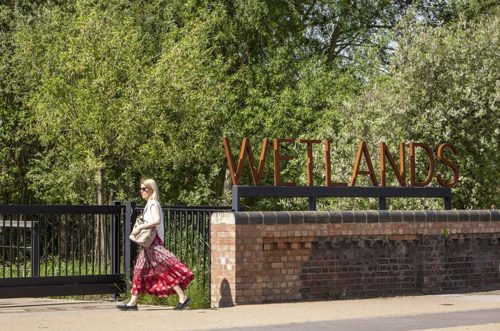
Design for a Large-Scale Development
Winner: Valencia Parque Central, Gustafson Porter + Bowman
Inspired by a poem written by Valencian writer Ausiàs March, Water full of wisdom, Parque Central is a bold and ambitious regeneration project that distils Valencia’s heritage into an engaging, contemporary public space. Five multi-level gardens connect several previously divided neighbourhoods, catalysing growth and helping these areas to flourish.
Shortlisted projects:
Houlton, Rugby – Key Phase 1, Bradley Murphy Design Limited (BMD)
Xi’an Jiaotong Liverpool University South Campus, BDP
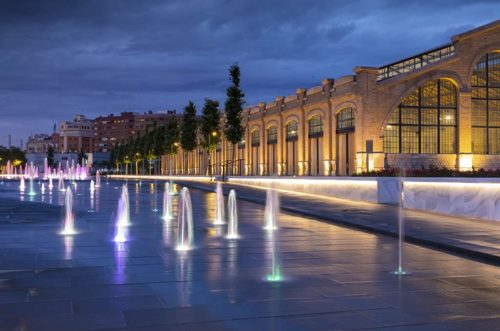
Design for a Medium-Scale Development
Highly commended: V&A Dundee public realm, Optimised Environments Limited (OPEN)
The brief for the V&A Dundee public realm set the challenge of a minimalist, hard-landscape setting, to which this project responded superbly. OPEN’s landscape proposals provide a strong setting for a landmark piece of architecture, complimenting a transformative addition to the city of Dundee.
Shortlisted projects:
The Bolshevik Factory, John McAslan + Partners
Kai Tak River Improvement Works (Wong Tai Sin Section), Hong Kong, Urbis Limited
Morecambe Promenade Sea Defence, Atkins Landscape and Urban Design
Queens Promenade, Atkins Landscape and Urban Design
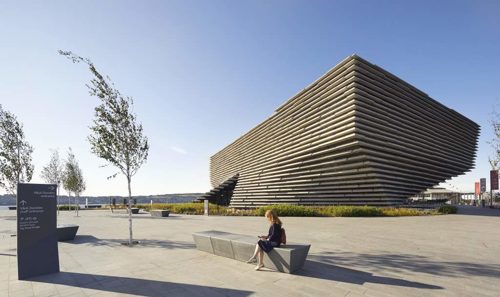
Design for a Small-Scale Development
Winner: Marlborough Primary School, Macgregor Smith Landscape Architects
As the project landscape architects for the challenging redevelopment of a Victorian school in Chelsea, Macgregor Smith took a rigorous, highly collaborative approach to deliver a vibrant learning environment. The scheme maximises access to outdoor space across multiple levels, and sets the example that all high-density environments should aspire to.
Shortlisted projects:
The Field, Hardman Square, Manchester, Layer (Landscape Architecture) Ltd
London Wall Place, Spacehub Design Ltd
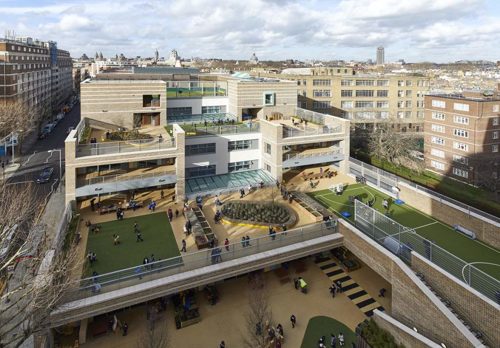
Design for a Temporary Landscape Project
Winner: Fitzpark, Arup
A six-month installation in Fitzrovia, London, Fitzpark used space for work, play, events and education to transform ideas of what a busy Central London street can be. The project had a clear transformative effect on the setting and the people using it, and Arup’s rigorous analysis both during and after the parklets’ use paves the way for similar projects to succeed in the future.
Shortlisted project:
The Walnut Grove: A Temporary Landscape of Legacy, Carl Smith Design

Enhancing Heritage and Culture
Special recognition: Folkestone Harbour Link , Macfarlane + Associates Ltd
The Harbour Link project aimed to sensitively regenerate three of Folkestone’s historical harbour assets into high-quality public spaces. The scheme reinvigorated a neglected part of town and revived its distinctive character. Judges were impressed with the historical research undertaken and the strong evidence presented for ongoing community benefit.
Shortlisted projects:
Accrington Town Square and Interpretive Artwork, IBI Group UK Ltd
Great Linford Manor Park – Conservation Management Plan, Andrew Hiorns Ltd.
The Restoration of Beddington Park, LUC
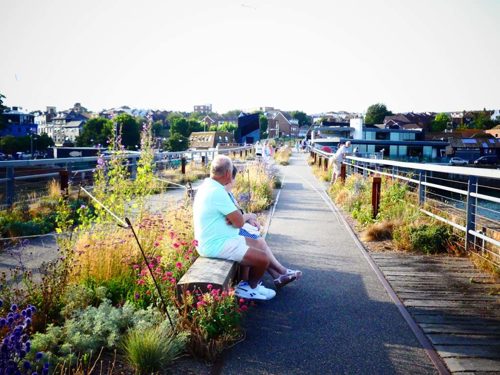
Excellence through Planting and Horticulture
Winner: The Water Gardens , HTA Design LLP
The retro truly meets the contemporary in this Heritage Lottery-funded restoration of a 1960s public park in Hertfordshire. HTA’s planting scheme formed a major part of a Garden that exudes the pop culture and exuberance of the era, while behind the scenes employing an innovative social media approach to evidence ongoing community value.
Shortlisted projects:
Sky UK Campus, Alexandra Steed Urban
Winton Memorial Garden, Project Centre Limited (PCL)
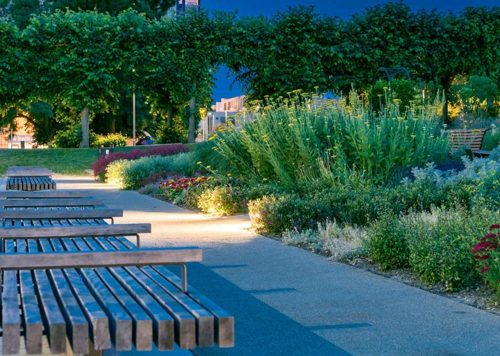
Landscape Planning and Assessment
Winner: Shropshire Landscape and Visual Sensitivity Assessment, Gillespies LLP
The judges panel called all four submissions exemplary. But the rigour, accessibility and ease of use of Gillespies’s report distinguished it as this year’s winner.
Shortlisted projects:
Colne and Crane Green Infrastructure Strategy, Arup
Charnwood Forest Landscape Character Assessment, FPCR Environment and Design Ltd
Greater Manchester Landscape Character and Sensitivity Assessment, LUC
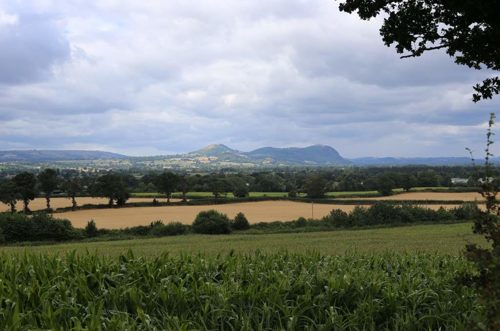
Local Landscape Planning
Winner: Masterplan for Sustaining Caerphilly’s Landscape, WYG
This clear, easy-to-read landscape masterplan recognises modern legislation for managing and sustaining Wales’s natural resources. Engaging with a communities’ shareholders throughout the process, WYG produced excellent mapping and context analysis that draws the reader into and through the process.
Shortlisted projects:
A Vision for Corporation Street, HTA Design LLP
Culture Mile – Look and Feel Strategy, Arup
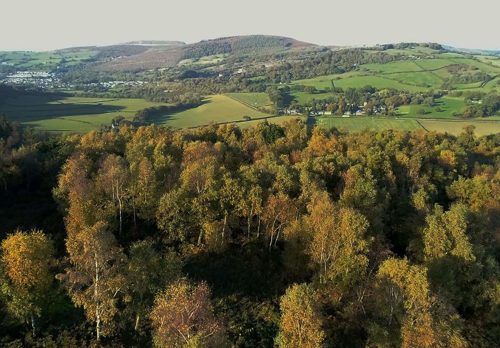
Transforming through Management and Science
Joint winners: The judges were so impressed with these entries that they decided to grant the Award to both. They are:
Charting a Natural Course: An Ecosystem Services Opportunities Map and Natural Capital Account for the River Irwell, The Environment Partnership (TEP) Ltd
Charting a Natural Course, an ecosystem services opportunity assessment for a heavily modified river catchment in Greater Manchester, is an innovative piece of work of great significance. Addressing many contemporary issues around natural capital accounting, this is a tool worthy of championing at the national level.
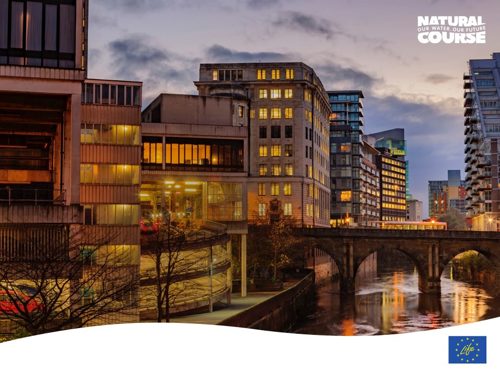
Richmond Park Management Plan, The Royal Parks
Equally of national significance is the Royal Parks’s entry – a exemplary Management Plan for Richmond Park that combines a values-driven approach with technical analysis of site condition to convey complex information in a meaningful, accessible, engaging way.
Urban Design and Masterplanning
Winner: High Path Estate Regeneration, PRP
This masterplan thoughtfully reconnects a chaotic site on the edge of the Wandle River eco-corridor with the surrounding townscape, creating a sustainable and inclusive community space. PRP’s comprehensive approach to collaboration, including over 30 community engagement programmes and a mentorship programme for young people, is one of many reasons for this scheme’s resounding success.
Shortlisted projects:
Western Harbour Masterplan, rankinfraser landscape architecture
Winstanley and York Road Estate Regeneration, Farrer Huxley Limited
